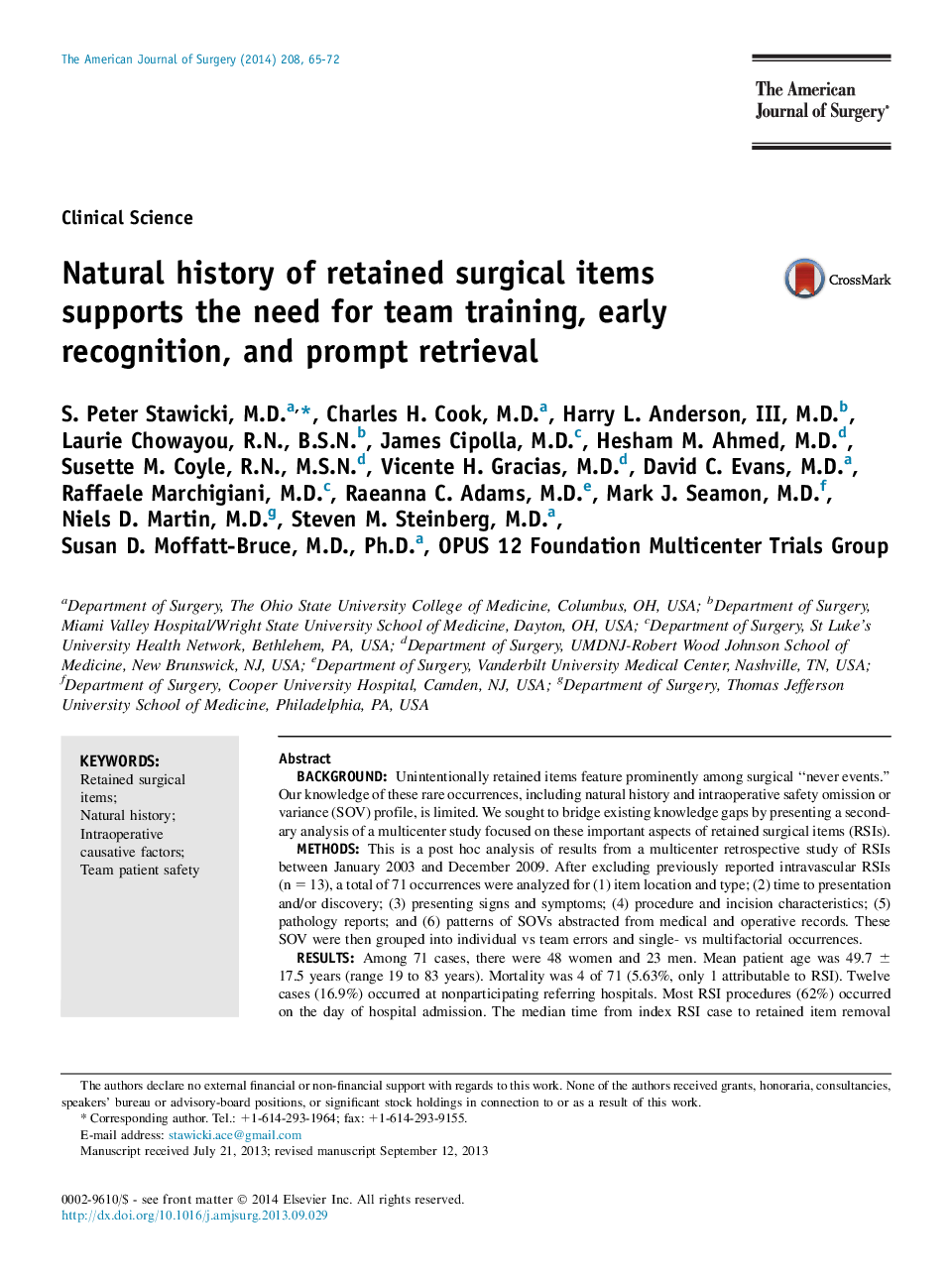| کد مقاله | کد نشریه | سال انتشار | مقاله انگلیسی | نسخه تمام متن |
|---|---|---|---|---|
| 4278667 | 1611505 | 2014 | 8 صفحه PDF | دانلود رایگان |
BackgroundUnintentionally retained items feature prominently among surgical “never events.” Our knowledge of these rare occurrences, including natural history and intraoperative safety omission or variance (SOV) profile, is limited. We sought to bridge existing knowledge gaps by presenting a secondary analysis of a multicenter study focused on these important aspects of retained surgical items (RSIs).MethodsThis is a post hoc analysis of results from a multicenter retrospective study of RSIs between January 2003 and December 2009. After excluding previously reported intravascular RSIs (n = 13), a total of 71 occurrences were analyzed for (1) item location and type; (2) time to presentation and/or discovery; (3) presenting signs and symptoms; (4) procedure and incision characteristics; (5) pathology reports; and (6) patterns of SOVs abstracted from medical and operative records. These SOV were then grouped into individual vs team errors and single- vs multifactorial occurrences.ResultsAmong 71 cases, there were 48 women and 23 men. Mean patient age was 49.7 ± 17.5 years (range 19 to 83 years). Mortality was 4 of 71 (5.63%, only 1 attributable to RSI). Twelve cases (16.9%) occurred at nonparticipating referring hospitals. Most RSI procedures (62%) occurred on the day of hospital admission. The median time from index RSI case to retained item removal was 2 days (range <1 to >3,600 days, n = 63). Abdominal RSIs predominated, and plain radiography was the most common identification method. Most RSIs removed early (<24 hours, n = 23) were asymptomatic. The most common clinical/diagnostic findings in the remaining group were focal pain (n = 22), abscess/fluid collection (n = 18), and mass (n = 8). Most common pathology findings included exudative reaction (n = 22), fibrosis (n = 17), and purulence/abscess (n = 15). On detailed review of intraprocedural events, most RSI cases were found to involve team/system errors (50 of 71) and 2 or more SOVs (37 of 71). Isolated human error was seen in less than 10% of cases.ConclusionsThe finding that most operations complicated by RSIs were found to involve team/system errors and 2 or more SOVs emphasizes the importance of team safety training. The observation that early RSI removal minimizes patient morbidity and symptoms highlights the need for prompt RSI identification and treatment. The incidence of inflammation-related findings increases significantly with longer retention periods.
Journal: The American Journal of Surgery - Volume 208, Issue 1, July 2014, Pages 65–72
